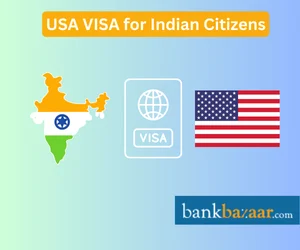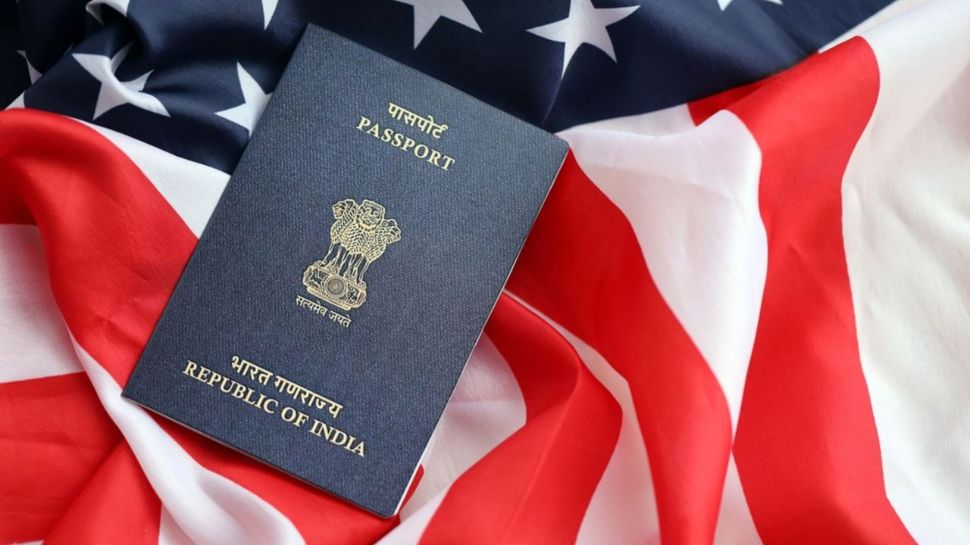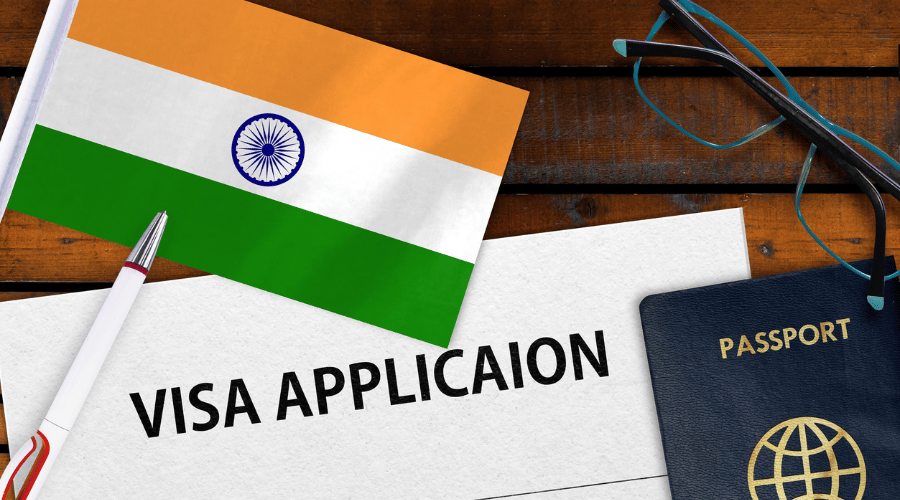Types Of US Visas: Your Questions Simplified
Unlocking Opportunities: Essential Details on US Visas for Indian People
Maneuvering the complexities of US visa choices is vital for Indian people intending to discover chances in the US. With different categories ranging from short-term site visitor visas to paths for long-term residency, recognizing the nuances of each can considerably impact one's journey. This conversation will highlight crucial information, including application treatments and eligibility requirements, that can equip people in their pursuit of new experiences. As we unbox these vital elements, the concern develops: what approaches can one use to improve their opportunities of a successful application?
Introduction people Visa Kind
When going across the complicated landscape of US migration, recognizing the different kinds of visas available is essential for Indian citizens seeking entrance into the US (Types Of US Visas). The US migration system is primarily classified right into 2 wide categories: immigrant visas and non-immigrant visas
Immigrant visas are designated for those planning to live permanently in the US. These consist of family-sponsored and employment-based visas, where applicants generally call for an enroller. Non-immigrant visas, on the various other hand, provide to people looking for short-lived home, such as visitors, business visitors, and those taking a trip for certain objectives like job or study.
Within the non-immigrant group, numerous visa kinds exist, consisting of B-1/ B-2 for business and tourism, H-1B for specialty line of work, L-1 for intra-company transferees, and O-1 for people with phenomenal capacities. Each visa has unique eligibility demands and application processes, demanding comprehensive research study to identify the proper category.
Comprehending these categories is important for Indian residents, as it allows them to navigate the application procedure a lot more efficiently, ensuring they choose the correct visa kind to fulfill their particular needs and goals. US Visa Requirements.
Pupil Visa Options
For Indian people striving to research in the US, pupil visas provide an essential pathway to pursue academic possibilities. The primary visa classifications for trainees are the F-1 and M-1 visas.
The F-1 visa is designated for academic trainees enrolled in a full-time program at an approved organization, such as universities and colleges. This visa permits students to take part in on-campus work and, under particular conditions, take part in optional functional training (OPT) after completing their degree, offering important job experience in their field of research study.
On the other hand, the M-1 visa is meant for employment or non-academic programs. It deals with pupils pursuing technical or employment training, enabling them to sign up in non-degree programs. M-1 visa owners might take part in functional training, however it is normally a lot more restricted compared to the F-1 classification.
To acquire a pupil visa, applicants should protect admission to a united state organization, obtain a Type I-20, and show economic capacity to support their education and learning and living costs. Recognizing these visa choices is substantial for Indian citizens preparing to begin their academic trip in the US.
Visa Categories
Several Indian residents seeking job opportunity in the US may take into consideration numerous classifications customized to various expert needs and certifications. One of the most prominent is the H-1B visa, made for skilled workers in specialty professions requiring a college degree or its comparable. It enables US companies to briefly utilize international workers, with a cap on the number of visas released yearly.
An additional crucial category is the L-1 visa, which facilitates the transfer of staff members within multinational companies. The L-1A visa is for managers and executives, while the L-1B visa is for employees with specialized expertise.
The O-1 visa accommodates people with amazing abilities in their area, including science, arts, or organization. For farming or seasonal job, the H-2A and H-2B visas are readily available, allowing companies to work with international workers for temporary positions.
Family-Based Immigration
Family-based migration supplies a pathway for US residents and authorized permanent citizens to rejoin with their relatives from India. This migration classification is essential for preserving familial bonds and helping with the combination of member of the family right into USn culture. US citizens can petition for instant family members, consisting of spouses, children, and moms and dads, without facing annual limits on visas. This expedited procedure significantly lowers waiting times for these close household links.
On the other hand, legal permanent residents might sponsor partners and unmarried kids, yet they go through yearly caps, causing much longer wait times. The family-sponsored immigration system is separated right into two main classifications: instant relatives and household choice categories. The former includes those that have a direct connection with a united state person, while the last includes more remote relatives, such as brother or sisters and married children of people, and children of legal irreversible citizens.
For Indian people looking for family-based immigration, understanding the nuances of this system is imperative. Appropriate paperwork and adherence to application procedures are important for effective sponsorship. By steering through these intricacies, family members can work in the direction of rejoining and building their lives with each other in the US.
Permanent Residency Process
The process of getting permanent residency in the US involves several essential visa classifications tailored for Indian citizens. Recognizing the application actions, consisting of needed documentation and eligibility requirements, is essential for a successful result. Additionally, potential applicants should understand the anticipated timeline and certain needs associated with each classification.
Visa Categories Overview
While traversing the intricacies of the US migration system, Indian people seeking permanent residency needs to acquaint themselves with various visa categories customized to different conditions. The primary path for long-term residency is with employment-based visas, which are categorized into numerous preferences, consisting of EB-1 for individuals with amazing capacities, EB-2 for professionals holding advanced levels, and EB-3 for proficient workers. Each category has certain qualification demands and handling times.

Diversity visas, although limited in number, supply a possibility for individuals from underrepresented countries to look for irreversible residency with a lottery game system. In addition, humanitarian alternatives such as asylum and refugee standing offer pathways for those dealing with oppression.
Comprehending these visa classifications is crucial for Indian citizens, as they significantly influence the approach for obtaining irreversible residency in the US. Each group's nuances and requirements necessitate cautious consideration to align with individual conditions and goals.
Application Process Steps
Steering the application process for permanent residency in the US includes numerous key steps that need to be diligently complied with to guarantee an effective result. The trip typically starts with determining the suitable migration category, such as employment-based or family-sponsored visas. Applicants need to gather essential documentation, consisting of evidence of eligibility, economic declarations, and individual identification.
When the group is recognized, the next step is to submit the Type I-130 (Petition for Alien Relative) or Type I-140 (Immigrant Application for Alien Worker), depending on the basis of the application. Following the authorization of the petition, applicants will certainly need to complete the National Visa Center (NVC) processing by submitting the needed fees and types.
Next, the applicant must undertake a clinical evaluation and get authorities clearance certifications. Once these are finished, an interview will certainly be set up at the US consular office or consular office. It is vital to prepare thoroughly for this meeting, as it can significantly affect the decision on the application. Upon authorization, the candidate will certainly obtain their visa, approving them permanent residency in the United States.
Timeline and Demands
Charting the timeline and demands for getting long-term residency in the US is essential for Indian people seeking to establish a lasting existence. The procedure primarily depends upon employment-based or family-sponsored pathways, each with particular prerequisites and timelines.
For employment-based migration, the procedure generally begins with a labor certification, which can take numerous months. When authorized, the company submits a Form I-140, Immigrant Petition for Alien Worker, which can take an additional 6 months to a year, depending on the processing. Adhering to I-140 authorization, candidates may need to wait on their concern day to come to be present, which can differ considerably based upon the applicant's classification and native land.
For family-sponsored immigration, US people can seek for prompt family members, which usually results in faster handling. Various other household groups may involve longer wait times due to yearly caps.
Application Treatments
Recognizing the application treatments for US visas is essential for Indian citizens looking for entrance right into the US. US Visa Requirements. This area will offer a summary of various visa classifications and lay out the detailed process for using. By complying with these guidelines, candidates can browse the complexities of the visa effectively
Visa Categories Review
Maneuvering the different visa categories offered to Indian citizens can be a complex process, but it is vital for those looking for to travel, function, or research study in the US. The US visa system is categorized largely right into non-immigrant and immigrant visas, each offering distinct purposes.
Non-immigrant visas, such as B-1/ B-2 for company and tourism, F-1 for website academic research study, and H-1B for specialized employment, allow short-term stays. Applicants have to show their intent to go back to India after their browse through.
On the other hand, immigrant visas, consisting of family-sponsored and employment-based groups, supply a path to long-term residency. These visas usually call for sponsorship from a relative or employer in the US, along with a strenuous application procedure.
)
Step-by-Step Process
Generally, the application process for US visas entails a number of critical steps that candidates should thoroughly follow to assure a smooth experience. The initial step is to figure out the suitable visa category based on the purpose of traveling, such as job, research study, or tourist. When the group is recognized, applicants need to finish the on-line DS-160 kind, giving exact individual information and travel details.
After sending the DS-160, candidates ought to pay the visa charge, which varies by visa type. Next off, schedule a visit for a visa interview at the local US Consular office or Consulate. US Visas For Indian Citizens. It is important to prepare for the interview by celebration required papers, including a legitimate visa, visa confirmation, charge payment receipt, and any type of sustaining paperwork specific to the visa classification
On the day of the interview, arrive punctually and dress suitably. During the interview, be prepared to respond to questions regarding your travel intents, financial stability, and ties to India. Lastly, if authorized, the visa will be marked in the visa, enabling travel to the US. Adhering to these steps guarantees an efficient and reliable application procedure for Indian citizens.
Tips for an Effective Application

Make certain that all kinds are completed accurately and truthfully. Little mistakes or omissions can lead to delays or perhaps denials. It is advisable to gather all necessary supporting documents, including monetary declarations, work letters, and evidence of connections to India, which demonstrate your intent to return post-visit.
Prepare for your visa meeting by exercising responses to usual questions associated to your itinerary and background - US Visas For Indian Citizens. Self-confidence and quality can substantially influence the police officer's impression. Finally, take into consideration seeking aid from trustworthy immigration consultants if you feel overwhelmed
Often Asked Questions
What Are the Processing Times for US applications?
Processing times for US visa can vary substantially based on the visa type, application volume, and the applicant's area - US Visas For Indian Citizens. Usually, candidates should prepare for a handling period ranging from a few weeks to numerous months
Can I Modification My Visa Condition While in the US?
Yes, people can transform their visa condition while in the US, offered they fulfill eligibility requirements and follow correct treatments. It is critical to submit the ideal application with US Citizenship and Migration Provider (USCIS)
Exist Age Limits for US Visa Applicants?
There are normally no certain age restrictions for US visa candidates; however, certain visa classifications may have age-related qualification standards. It is necessary to examine the needs for each visa type to assure compliance.
What Are Typical Reasons for Rejection?
Usual factors copyright rejection consist of inadequate financial resources, failure to demonstrate ties to the home nation, insufficient application, lack of proper documents, previous migration offenses, and failing to fulfill qualification standards for the certain visa category.
Exactly How Can I Appeal a Visa Rejection Choice?
To appeal a visa rejection, review the consular policeman's reasons, collect supporting documents, and send an official interest the appropriate authority, guaranteeing to stick to defined timelines and procedural demands for the allure process.